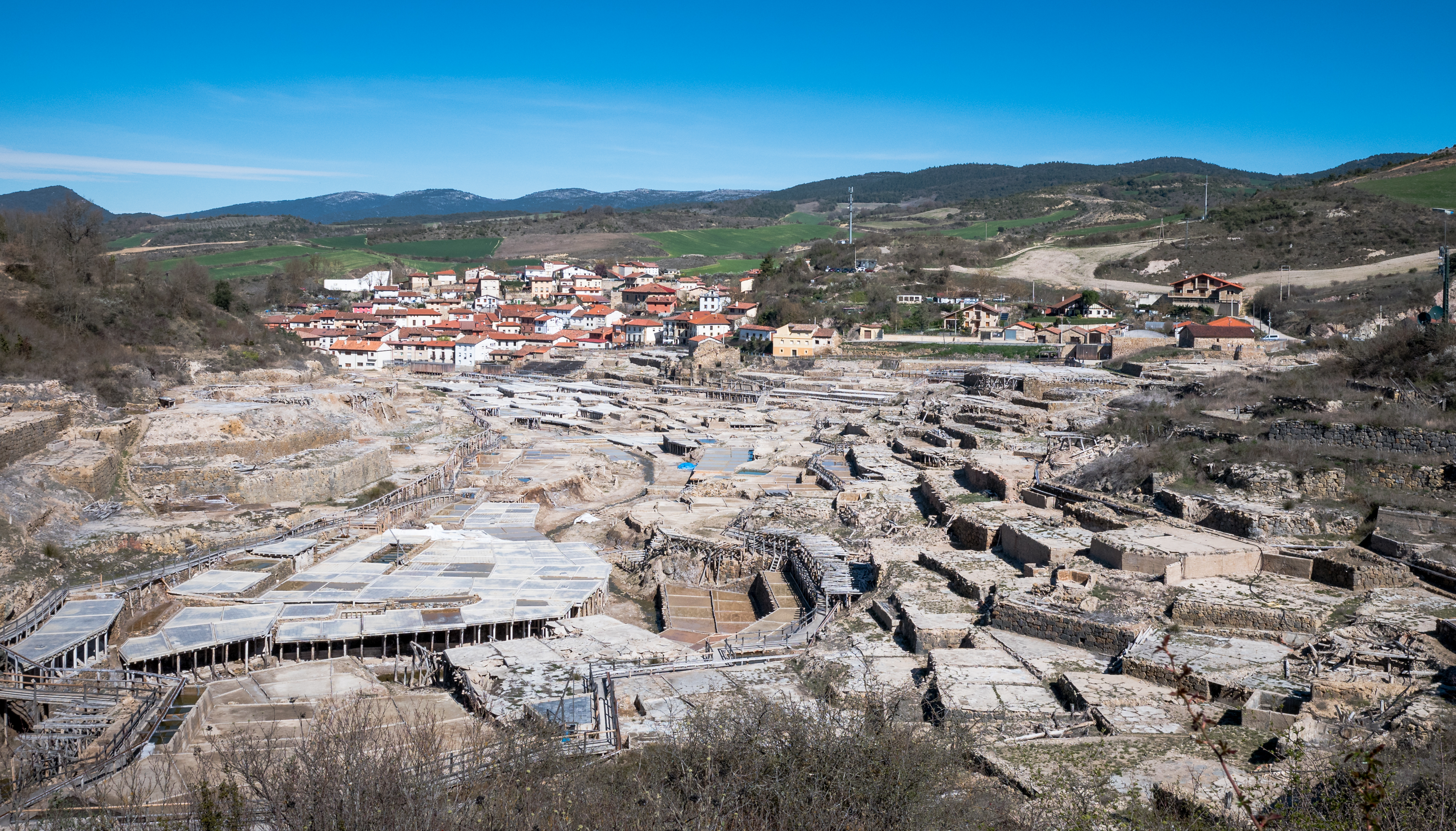Añana on:
[Wikipedia]
[Google]
[Amazon]
Añana or Salinas de Añana ( eu, Gesaltza Añana) is both a valley and
 The salt water in the valley of Añana emerges from natural springs, where it is extracted using evaporation in pans. Archeological evidence suggests the site has been in use for 7,000 years making this the oldest active salt production site in the world. The salt pans as they are seen today were mostly developed in the first century BCE. Over 5,000 pans have been built since
The salt water in the valley of Añana emerges from natural springs, where it is extracted using evaporation in pans. Archeological evidence suggests the site has been in use for 7,000 years making this the oldest active salt production site in the world. The salt pans as they are seen today were mostly developed in the first century BCE. Over 5,000 pans have been built since
AÑANA in the Bernardo Estornés Lasa - Auñamendi Encyclopedia
Salinas de Añana and "Salt Valley" Tourism Office
Municipalities in Álava {{basque-geo-stub
municipality
A municipality is usually a single administrative division having corporate status and powers of self-government or jurisdiction as granted by national and regional laws to which it is subordinate.
The term ''municipality'' may also mean the go ...
located in the province of Álava
Álava ( in Spanish) or Araba (), officially Araba/Álava, is a province of Spain and a historical territory of the Basque Country, heir of the ancient Lordship of Álava, former medieval Catholic bishopric and now Latin titular see.
Its ca ...
, in the Basque Country, northern Spain
, image_flag = Bandera de España.svg
, image_coat = Escudo de España (mazonado).svg
, national_motto = ''Plus ultra'' (Latin)(English: "Further Beyond")
, national_anthem = (English: "Royal March")
, i ...
, with the main population nucleus being the village of Salinas de Añana. Moreover, Añana is also the name of one of the seven counties in which the province of Álava is divided. The town is renowned for its old salt flats Salt flats, Salt flat, Salt Flats, or Salt Flat may refer to: Geology
*Salt pan (geology), a flat expanse of ground covered with salt and other minerals
* Dry lake, an ephemeral lakebed that consists of fine-grained sediments infused with alkali sal ...
, which were formed beginning in the Triassic Period
The Triassic ( ) is a geologic period and system which spans 50.6 million years from the end of the Permian Period 251.902 million years ago ( Mya), to the beginning of the Jurassic Period 201.36 Mya. The Triassic is the first and shortest period ...
.
Salt Valley
 The salt water in the valley of Añana emerges from natural springs, where it is extracted using evaporation in pans. Archeological evidence suggests the site has been in use for 7,000 years making this the oldest active salt production site in the world. The salt pans as they are seen today were mostly developed in the first century BCE. Over 5,000 pans have been built since
The salt water in the valley of Añana emerges from natural springs, where it is extracted using evaporation in pans. Archeological evidence suggests the site has been in use for 7,000 years making this the oldest active salt production site in the world. The salt pans as they are seen today were mostly developed in the first century BCE. Over 5,000 pans have been built since Roman times
In modern historiography, ancient Rome refers to Roman civilisation from the founding of the city of Rome in the 8th century BC to the collapse of the Western Roman Empire in the 5th century AD. It encompasses the Roman Kingdom (753–509 BC ...
, with exportation of its salt a major business, especially after the year 1114 when special rights were granted to the town. It was claimed by the Spanish crown in 1564 who oversaw salt production until 1868
Events
January–March
* January 2 – British Expedition to Abyssinia: Robert Napier leads an expedition to free captive British officials and missionaries.
* January 3 – The 15-year-old Mutsuhito, Emperor Meiji of Jap ...
. By the 1970s, production had decreased and the pans were largely abandoned as marine salt production had become cheaper and more efficient. At the end of the 20th century the salt pans began to be restored as a not-for-profit organisation, with a significant production of gourmet salts as well as spa
A spa is a location where mineral-rich spring water (and sometimes seawater) is used to give medicinal baths. Spa towns or spa resorts (including hot springs resorts) typically offer various health treatments, which are also known as balneoth ...
tourism to bring needed income to the area. The site was added to the European Route of Industrial Heritage
The European Route of Industrial Heritage (ERIH) is a tourist route of the most important industrial heritage sites in Europe. This is a tourism industry information initiative to present a network of industrial heritage sites across Europe. The a ...
in 2019.
References
External links
AÑANA in the Bernardo Estornés Lasa - Auñamendi Encyclopedia
Salinas de Añana and "Salt Valley" Tourism Office
Municipalities in Álava {{basque-geo-stub